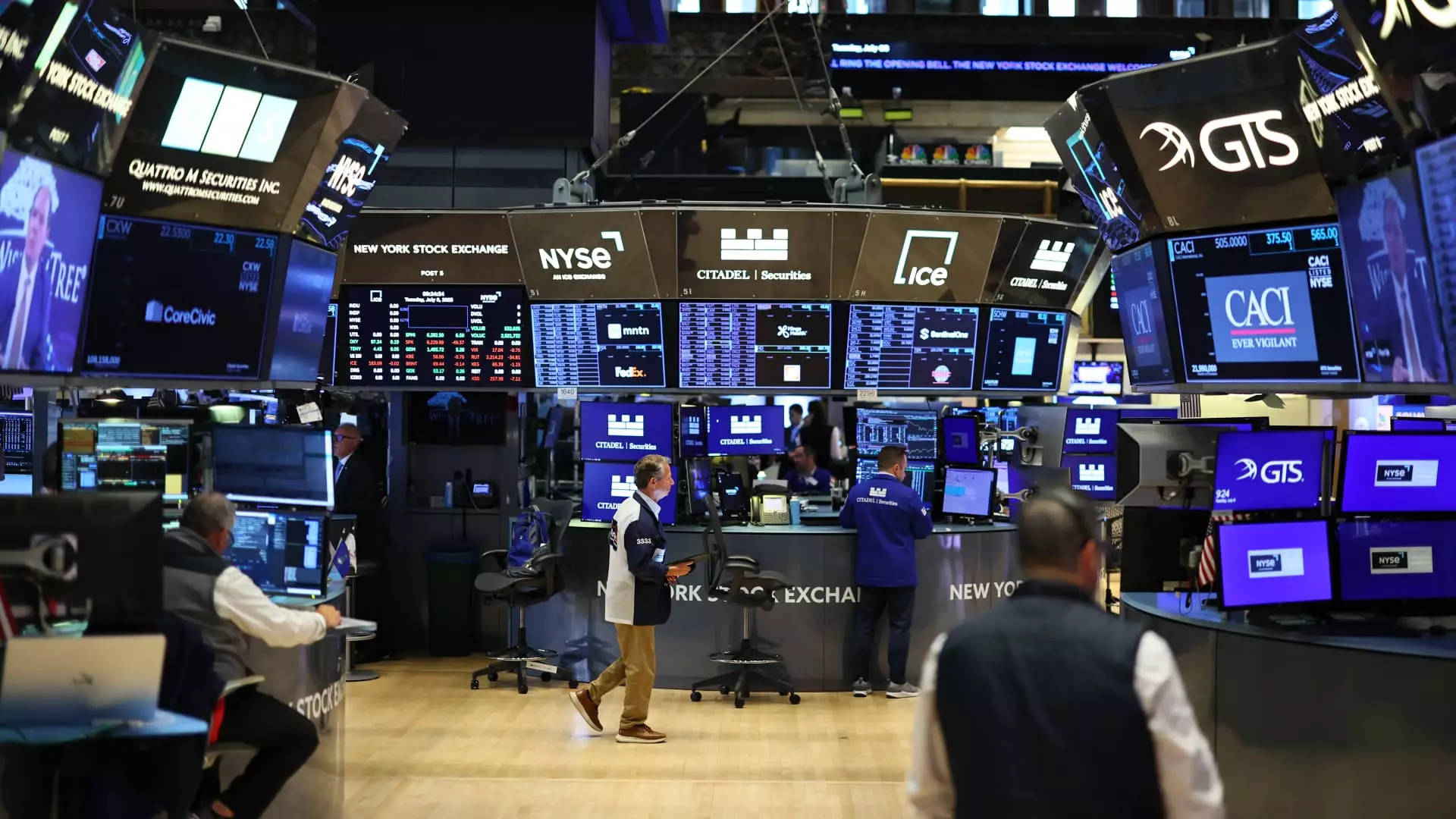In recent months, the financial outlook has shifted from cautious optimism to an unsettling realization that the stock market’s rally might be losing its steam. Leading voices in the investment sphere, such as Vanguard’s Roger Hallam, paint a picture of economic slowdown, inflation, and uncertain Federal Reserve policies. This perspective challenges those who cling to the notion that markets will remain resilient or continue their upward trajectory. It urges a sobering reflection on current investment behaviors and exposes the dangers of complacency in an environment that could turn adversarial for long-term portfolios.
The concern isn’t simply abstract—it’s rooted in tangible economic signals. Hallam highlights declining growth prospects, a steady decrease in labor market strength, and rising inflation—as indicators that the days of easy gains could be behind us. His prediction that the Fed will pivot towards job preservation, possibly lowering interest rates towards the year’s end, reveals a fragile balancing act. This strategy could prop up bond markets temporarily but also risks overly optimistic assumptions about the economy’s resilience. Investors must recognize that such moves may be more about short-term stabilization than genuine recovery, and that persistent inflationary pressures might further complicate the scenario.
Reevaluating Fixed Income’s Role in Portfolio Defense
Amid these turbulent prospects, the appeal of fixed income as a safe harbor becomes even more pronounced. Vanguard’s emphasis on increasing exposure to bonds isn’t merely a tactical recommendation; it signals a strategic shift towards risk mitigation in uncertain times. The firm’s new government bond ETFs, focusing heavily on U.S. Treasuries, are a clear acknowledgment that stability may outweigh growth prospects in the immediate future. Yet, is it enough? Relying heavily on bonds, especially at current yields, requires a nuanced understanding of the risk-reward tradeoff. If inflation persists or interest rates fall more sharply than anticipated, bondholders could face real losses or reduced returns, undermining the perceived safety.
Furthermore, this tilt towards fixed income could be misleading if investors fail to recognize the underlying structural vulnerabilities. Over-reliance on government bonds, for instance, neglects risks such as fiscal deficits, geopolitical tensions, or policy missteps that could spook markets further. Defensive positioning must be balanced with vigilance, rather than wholesale reallocations driven by fear or short-term forecasts. Wise investors will integrate fixed income into a broader, more diversified risk management approach, emphasizing not just safety but resilience against unpredictable shocks.
The Illusion of a ‘Safe’ Re-Entry and the Allure of Defensive Strategies
Meanwhile, the narrative from BlackRock’s Jay Jacobs advocates a more tactical approach—using a ‘barbell’ strategy and buffer ETFs—aimed at protecting downside while maintaining some upside potential. Though appealing in theory, this strategy risks creating an illusion of security in turbulent waters. Buffer ETFs, which cap upside gains in exchange for downside protection, might seem attractive, but they can deceive investors into a false sense of security. Market volatility, geopolitical upheavals, or sudden inflation spikes can easily breach the expected buffers, leaving investors exposed.
Jacobs’ focus on macro themes like infrastructure and artificial intelligence underscores a belief that strong secular trends can offset macroeconomic risks. While this is a valid point—especially considering how resilient certain industries may be—it also presumes that these sectors can withstand shocks or that the geopolitical environment will favor U.S. infrastructure spending. History reminds us that macro strategies and thematic investing, though promising, don’t provide immunity from market downturns. They are, at best, components of a diversified toolkit; at worst, they may foster overconfidence amidst chaos.
In a climate where economic signals are conflicting and risk amplifies, a center-leaning liberal stance would advise pragmatism over bravado. That means recognizing the limits of forecasts and avoiding the hubris of claiming certainty. Investors should be cautious of narratives promising quick fixes or guaranteed safe havens. Instead, cultivating a balanced allocation—ready to adapt as conditions evolve—is paramount. The next six months could test even the most seasoned investors’ resolve, making skepticism and due diligence the best defenses against potential disaster.

